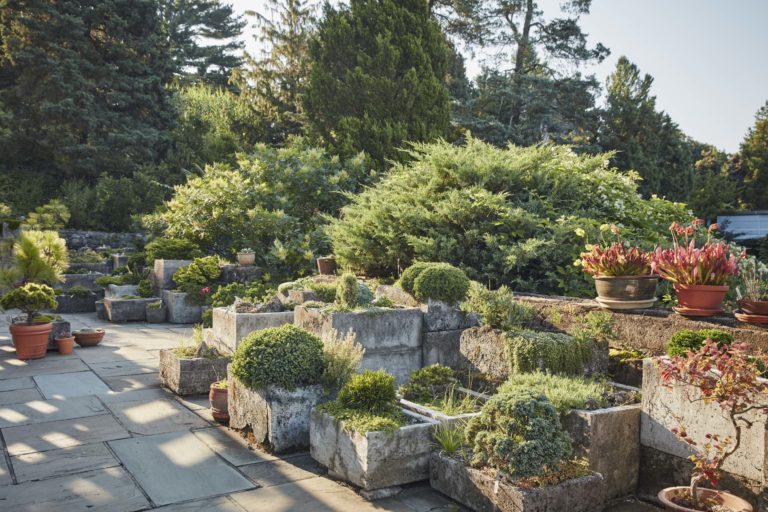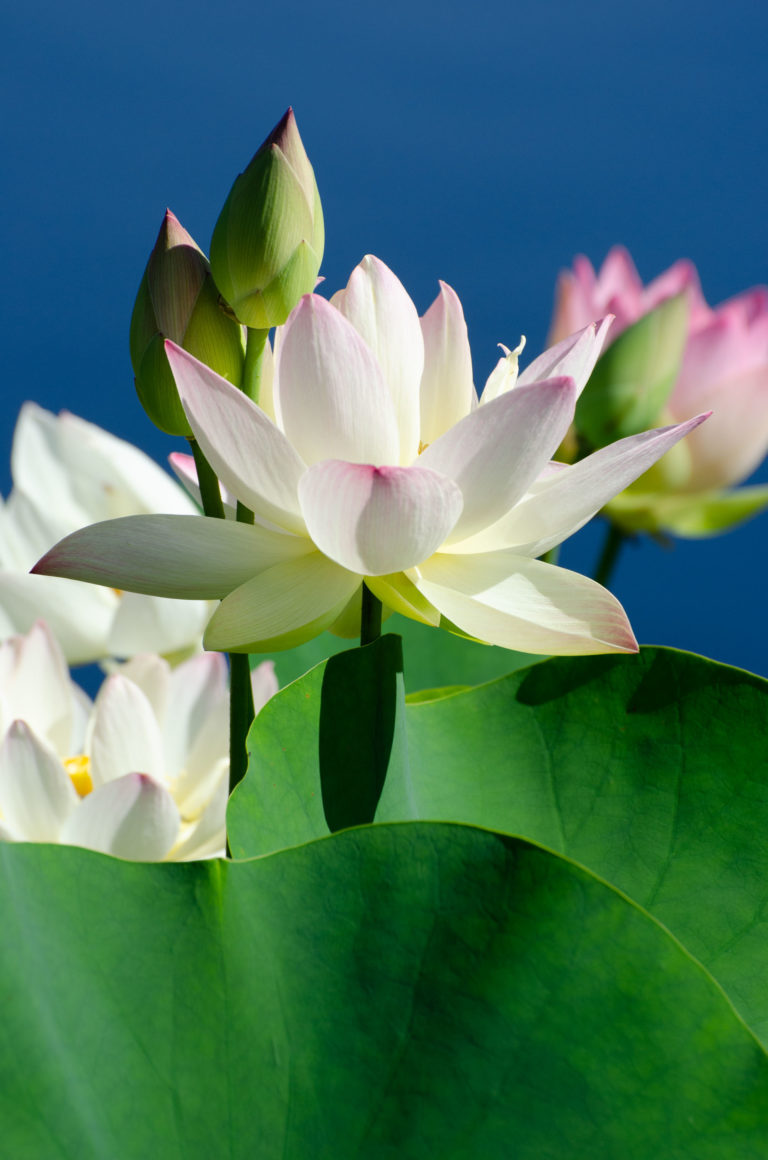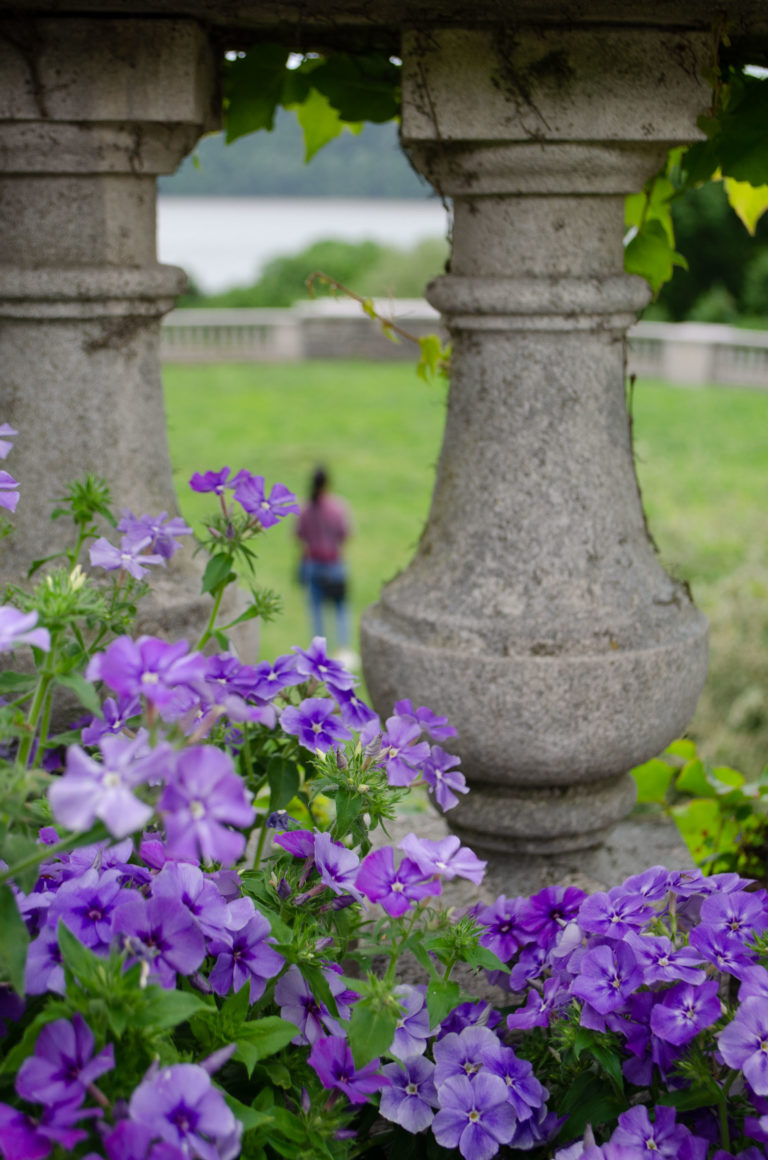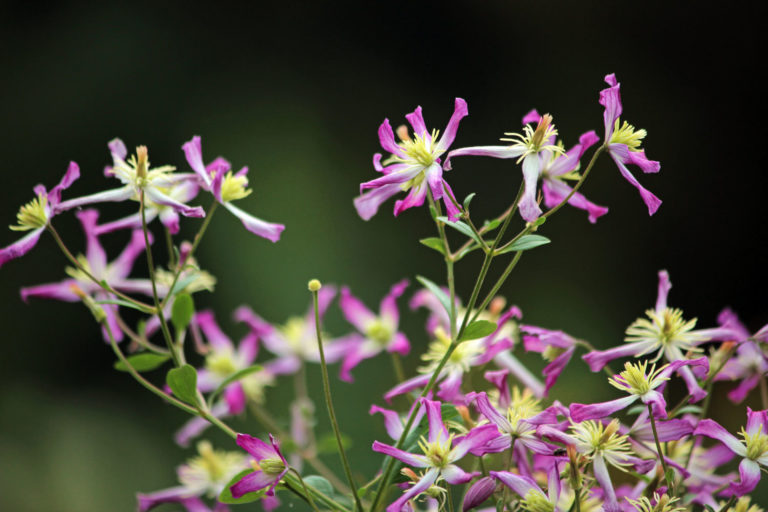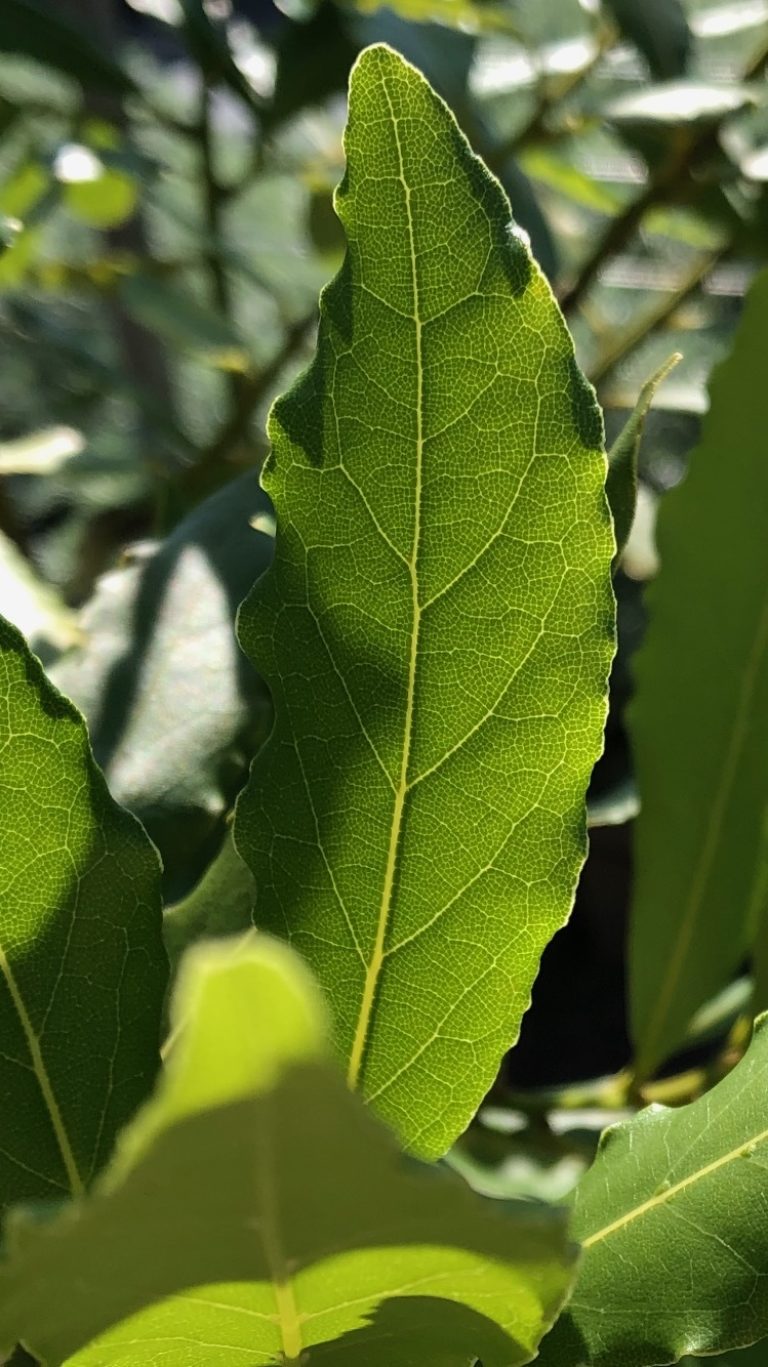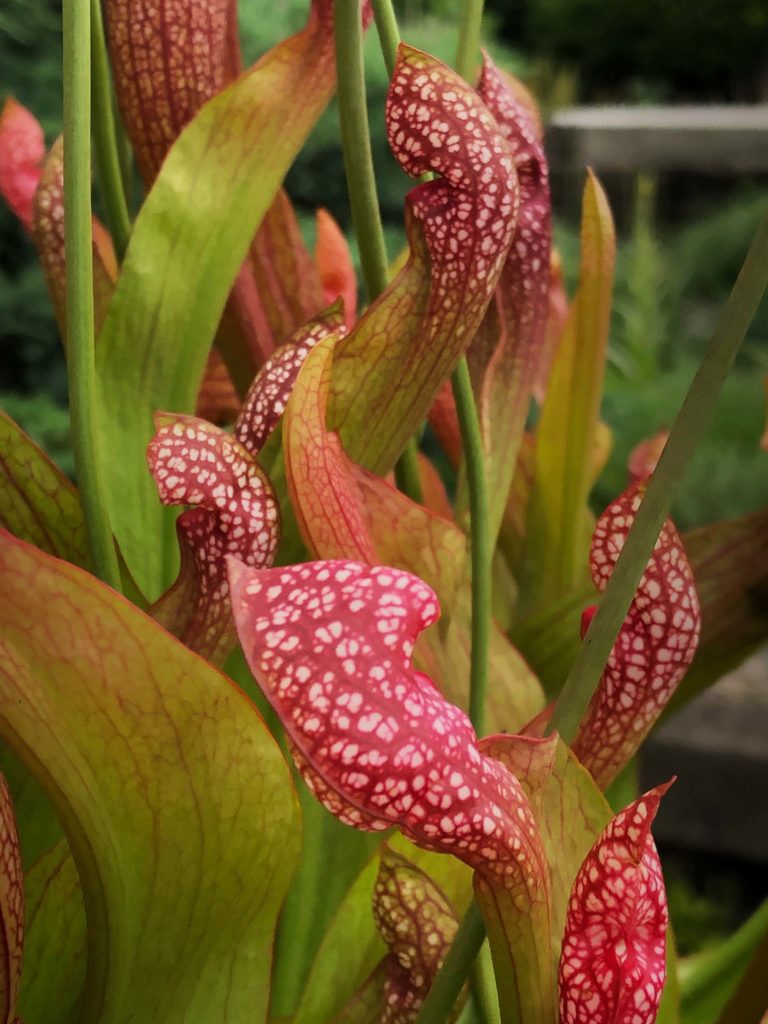
Carnivores in High Places: Pitcher Plants
July 9, 2020A summer jaunt in the gardens is likely to take you up past the Herb and Dry Gardens, the Alpine House and a colorful line of carnivorous plants perched on the wall dividing on the Alpine Terrace from the terraces below it. If it seems like an unlikely place to find them—they are hardly alpines, are they?—rest assured they belong there. Planted in containers, they enjoy a very specific planting mix suitable to these bog denizens—acidic, constantly wet soils that are low in nutrients.
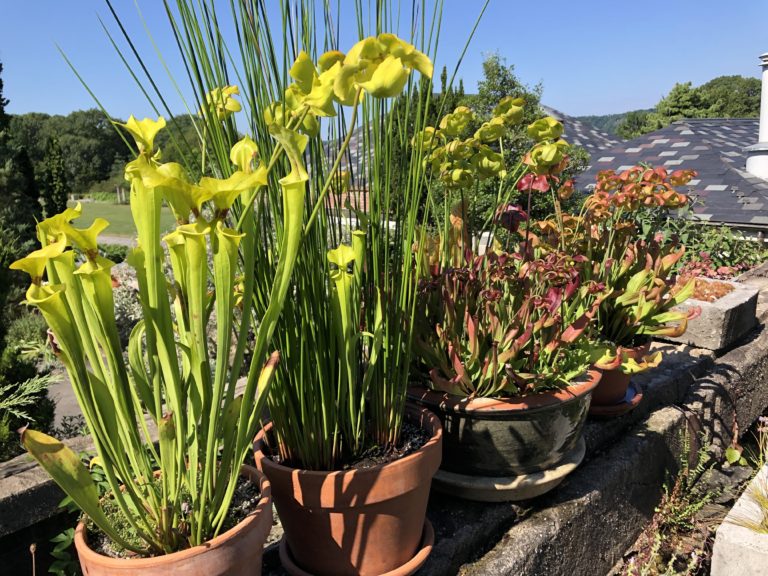
They could be grown and displayed anywhere (almost) in the garden as long as they have a nice tray or saucer, kept full of water, to help them stay consistently wet. But in addition to consistent monitoring for moisture, they also want full sun. And minimal protection from winter. All these factors, together with their relatively short height—who doesn’t want to be seen and admired?—make the visibility of this particular wall one of their especially happy places.
To supplement their nutrient-poor soil, they also catch and absorb nutrients from unsuspecting creatures that pass by and are lured in. And that, of course, is what makes them carnivorous or, as they are sometimes called, insectivorous. These plant opportunists will eat insects, spiders, worms or other tiny curious creatures that yield to the lure. Most pitcher plants trap prey in tubular leaves from which they cannot escape. There they are slowly broken down by digestive acids and enzymes secreted by the plant. Insects are lured by a combination of colorful leaves and by a nectar secreted by the leaves. The nectar contains a drug that causes paralysis, making it easier for the insect to be trapped.
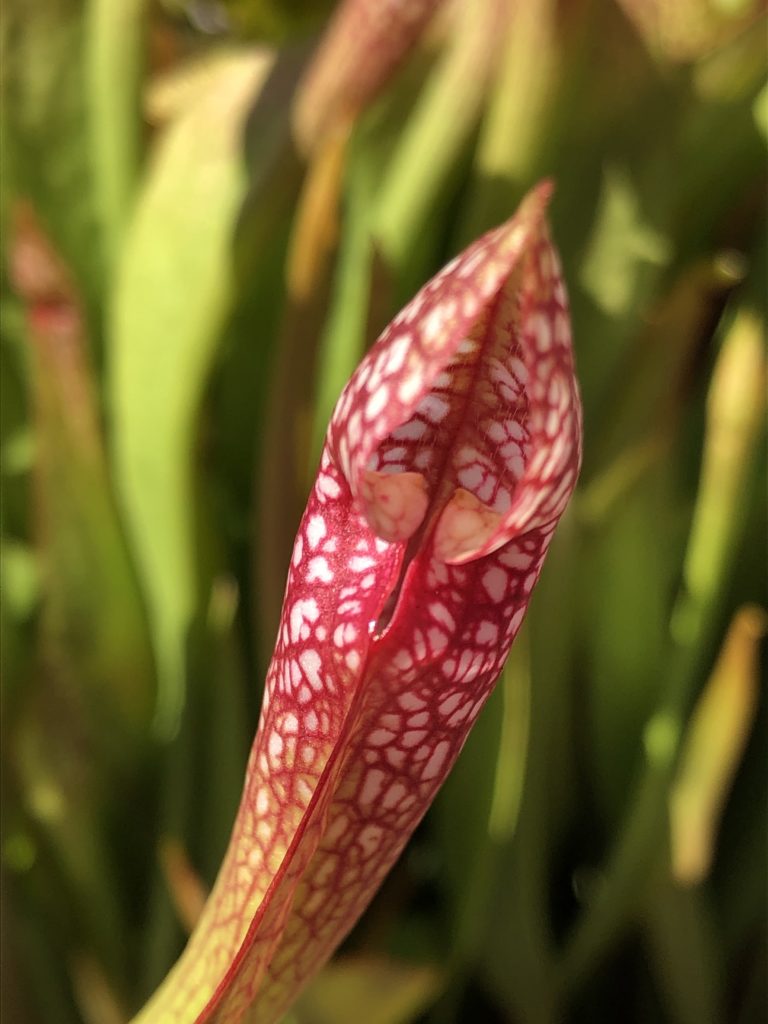
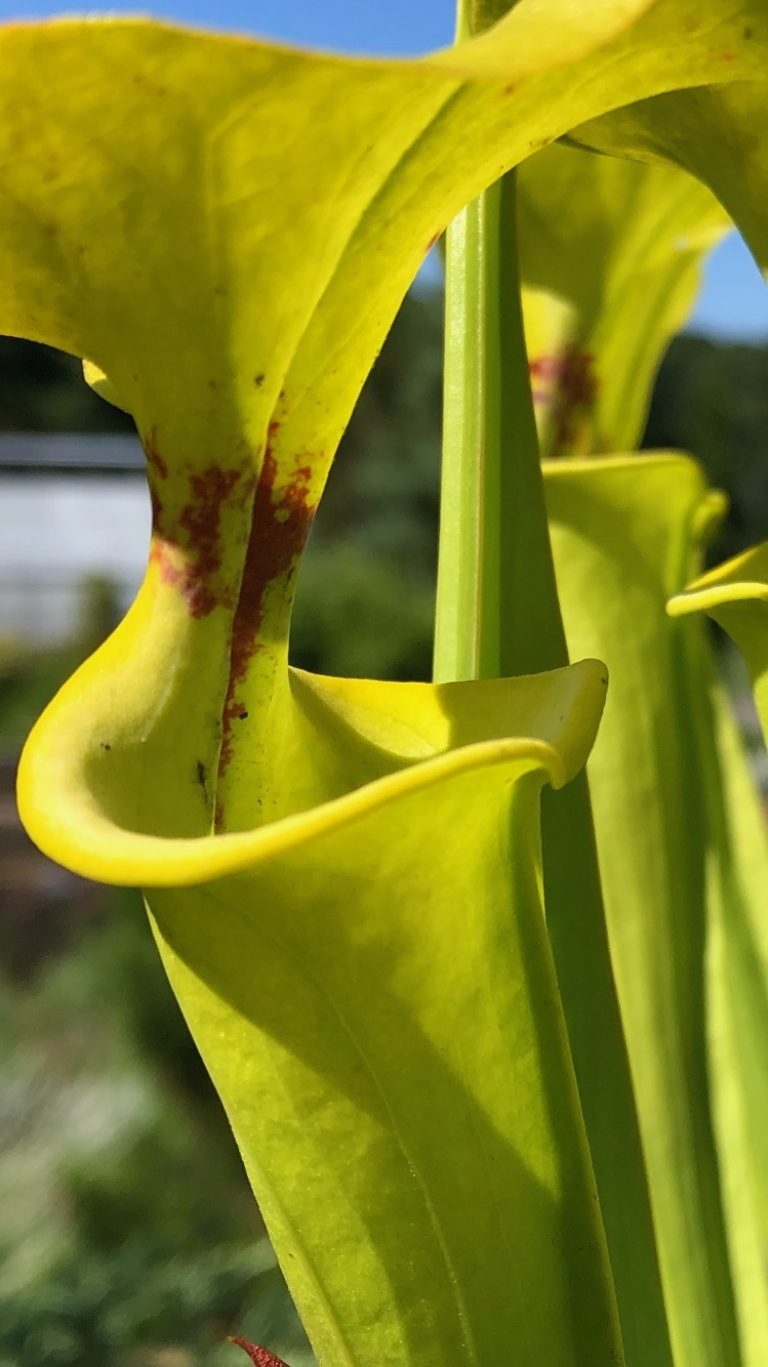
The plants displayed on our Alpine Terrace, perfectly hardy and mostly native to the US, are American pitcher plants—Sarracenia species and hybrids. There is even one native in NY state, the purple pitcher plant, Sarracenia purpurea. While ours are all in containers, American pitcher plants could grow quite happily in the ground at Wave Hill—if we had a bog to accommodate them.
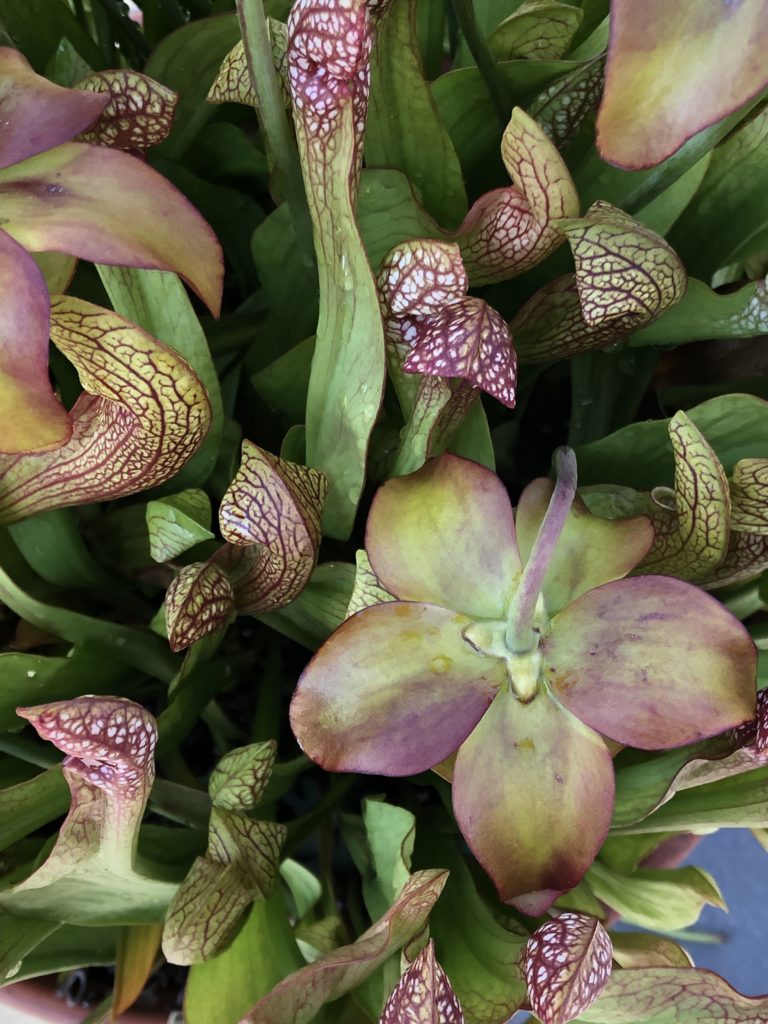
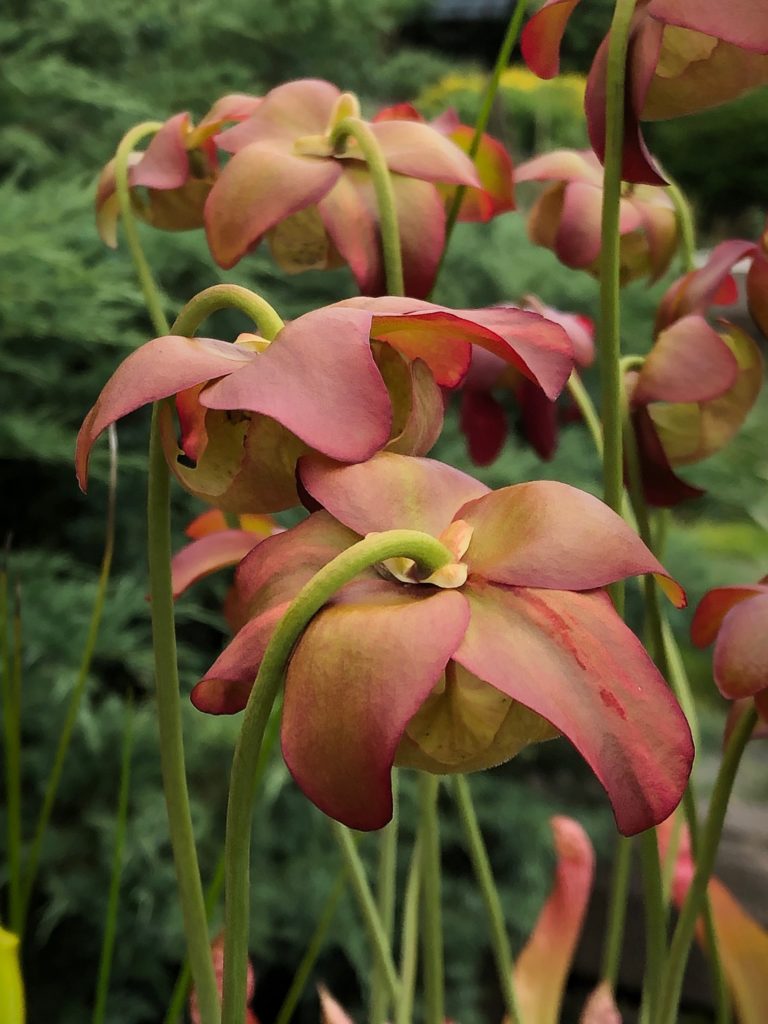
American pitcher plants require a winter dormancy, like other hardy perennials. After the foliage dies down in the fall, these planted containers enjoy a cool winter rest in the Alpine House. Their beautiful and unusual flowers bloom in the spring, usually pollinated by bees. Once the flowers fade the seed pods remain and may be mistaken for flowers later in the season. It is not clear how long our pitcher plants have had a home on the Terrace, but it seems they’ve been a welcome presence there for decades.
